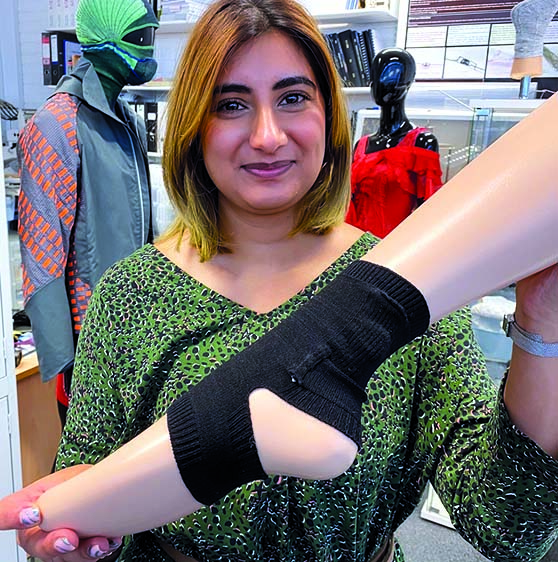
Researchers at the Nottingham School of Art and Design have designed a smart “over-sock” that predicts near falls.
“Only an estimated third of older people return to independent living following a hip fracture, for instance,” says Theodore Hughes-Riley, an associate professor in electronic textiles. “So being able to detect near falls will allow older people and their carers to take action before a potentially life-changing fall happens.”
A tiny motion sensor is encapsulated in resin at the over-sock’s ankle, and an algorithm spots unusual motion to differentiate among normal gait, a near fall and a fall.
The project is the cumulation of Zahra Rahemtulla’s Ph.D. studies. “When an older person experiences a fall, they can be left unconscious or immobile on the floor for a long period of time and unable to call for help,” she says. “So by alerting carers and medical professionals to falls in real time, older people will be able to receive the treatment that they may badly need, which could help save lives.”
With a device that attaches to the wearer, the data can go with them, as compared with motion sensors that are placed inside a person’s home.
The research was published in Electronic Textile Materials in February.
 TEXTILES.ORG
TEXTILES.ORG


